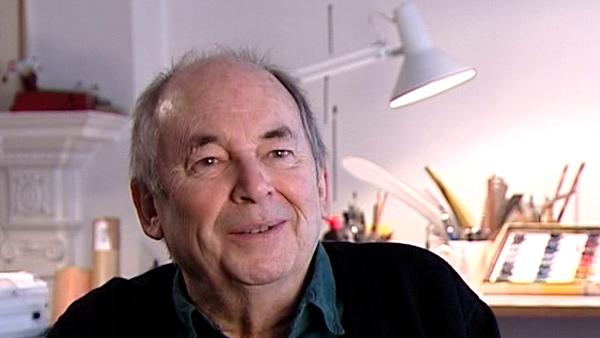NEXT STORY

Stanley Simmonds and preparing to read English at Cambridge
RELATED STORIES

NEXT STORY

Stanley Simmonds and preparing to read English at Cambridge
RELATED STORIES


|
Views | Duration | |
|---|---|---|---|
| 1. Memories of early life and secondary school | 3 | 2860 | 05:28 |
| 2. Drawing caricatures of my headmaster | 913 | 02:44 | |
| 3. Art at school | 551 | 02:40 | |
| 4. Getting help from my Latin teacher and her husband | 417 | 03:34 | |
| 5. Rejections from Fougasse at Punch | 503 | 02:42 | |
| 6. A visit to the office of Punch and my first... | 433 | 03:00 | |
| 7. The Festival of Britain | 313 | 02:08 | |
| 8. Stanley Simmonds and preparing to read English at Cambridge | 363 | 02:40 | |
| 9. My experience of national service | 356 | 02:39 | |
| 10. Performing in The Alchemist in front of Alec Guinness | 275 | 05:00 |

I can remember two things that were well, sort of markers again… trying to remember things. One was going to, this was 1951, and going to… what was that exhibition called? The Festival of Britain, and, again when I think about pictures that I liked, or thought about, or was influenced by at the time, I generally think it was much earlier than I would have imagined. Because I suppose then I was 19, and I can remember going in there, and there were quite a lot of pictures there. There was the Lion and Unicorn Pavilion, with Edward Bawden and there was Roland Emett, who I'd know because he was in Punch, and there was a painting The Origins of the Land, by Graham Sutherland, and there were paintings by John Minton and by Keith Vaughan, and I remember those because I'd liked Minton, but I thought he was a very good illustrator, actually. I thought he was much better as an illustrator than as a painter. And this was rather a big painting, and it was good, but what was interesting was that Vaughan who… they were those sort of neo-Romantics, which you know, I was tremendously influenced by them at the time, wanted to be like that. But what was interesting about Keith Vaughan was he'd actually changed his style. He'd stopped being a sort of Samuel Palmer-type Romantic, and had become the sort of broad figurative painting that he went on doing after that. That was one thing. Another thing at about that time was that I must have… I think it was then that I bought a copy of Tristram Shandy, illustrated by Brian Robb.
Quentin Blake, well loved British writer and illustrator, is perhaps best known for bringing Roald Dahl's characters to life with his vibrant illustrations, and for becoming the first ever UK Children's Laureate. He has also written and illustrated his own books including Mr Magnolia which won the Kate Greenaway Medal.
Title: The Festival of Britain
Listeners: Ghislaine Kenyon
Ghislaine Kenyon is a freelance arts education consultant. She previously worked in gallery education including as Head of Learning at the Joint Education Department at Somerset House and Deputy Head of Education at the National Gallery’s Education Department. As well as directing the programme for schools there, she curated exhibitions such as the highly successful Tell Me a Picture with Quentin Blake, with whom she also co-curated an exhibition at the Petit Palais in Paris in 2005. At the National Gallery she was responsible for many initiatives such as Take Art, a programme working with 14 London hospitals, and the national Take One Picture scheme with primary schools. She has also put on several series of exhibition-related concerts. Ghislaine writes, broadcasts and lectures on the arts, arts education and the movement for arts in health. She is also a Board Member of the Museum of Illustration, the Handel House Museum and the Britten-Pears Foundation.
Tags: 1951, The Festival of Britain, Lion and Unicorn Pavilion, Punch magazine, the Origins of the Land, the Romantics, Tristram Shandy, Edward Bawden, Roland Emett, Graham Sutherland, John Minton, Keith Vaughan, Samuel Palmer, Brian Robb
Duration: 2 minutes, 8 seconds
Date story recorded: January 2006
Date story went live: 24 January 2008